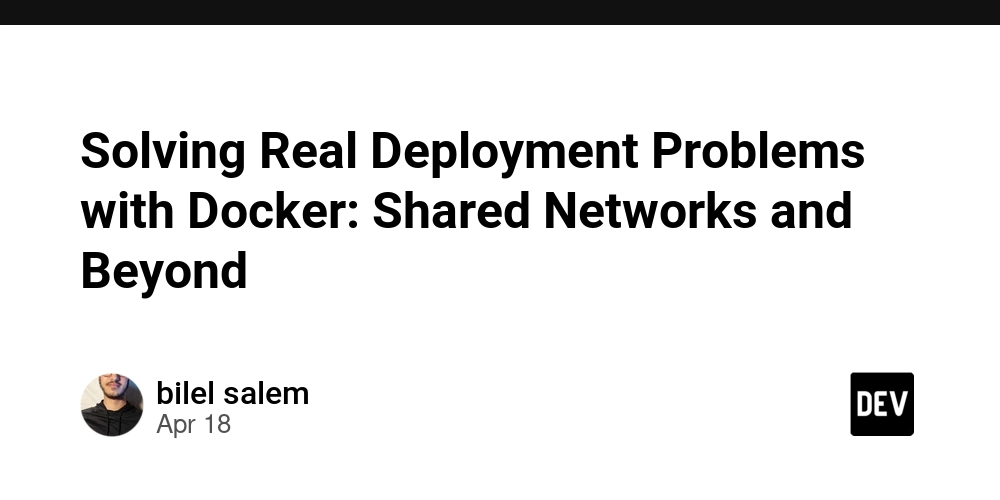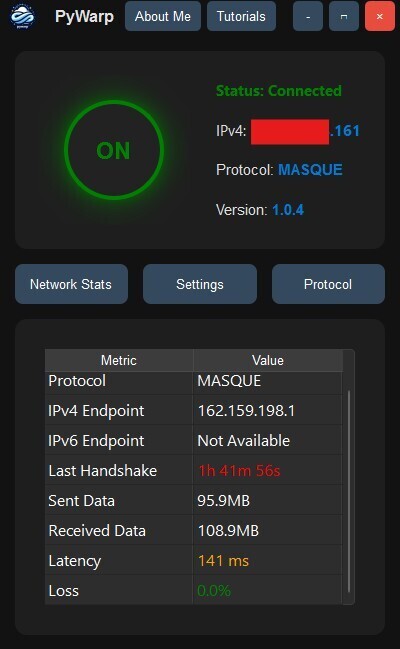Solving Real Deployment Problems with Docker: Shared Networks and Beyond
Docker makes development and deployment easier—but it’s not always plug and play. As your stack grows, simple containers stop being enough. One of the first real-world challenges you’ll run into is inter-container communication, especially when building microservices or replicating production environments locally. Let’s walk through a common problem and how Docker’s shared networks feature solves it. The Problem: "It works on my machine"—until containers can't talk to each other Imagine this: you're working on a simple microservices architecture with a Node.js API, a Redis cache, and a PostgreSQL database. You’ve containerized everything. Locally, you run each container, expose the ports, and it all seems fine—until your API container tries to connect to the database using localhost:5432. It fails. Why? Because in Docker, each container has its own network namespace. From the API container’s perspective, localhost means itself—not the host or the Postgres container. Manually exposing ports and referencing host.docker.internal might work in some setups, but it's fragile, doesn’t scale, and often breaks on different operating systems or cloud environments. The Solution: Shared Docker Networks The clean, scalable fix is using a user-defined Docker network. When you create a custom bridge network, Docker adds internal DNS resolution. Containers on the same network can reference each other by name—no need to hardcode IPs or guess what localhost actually points to. Example docker network create app-network Now you launch your services on the same network: docker run -d --name db --network app-network postgres docker run -d --name redis --network app-network redis docker run -d --name api --network app-network my-node-api Inside the API container, you can connect to the database using db:5432 or to Redis using redis:6379. Docker resolves the names automatically. No extra config needed. Why this matters You get environment parity between local dev and production. Containers can communicate securely without exposing ports to the host. Adding new services is plug-and-play—no need to rewire everything. A Real-World Scenario: Local Dev Environments That Mirror Production Let’s say you're building a staging environment that mimics your Kubernetes cluster. You spin up 5-6 services in Docker Compose—some internal, some public-facing. Without a shared network, you’ll end up exposing too many ports, managing hostnames manually, and debugging broken links between services. But with a shared network in Docker Compose: services: api: build: ./api networks: - backend db: image: postgres networks: - backend networks: backend: It all “just works.” Services talk to each other by name, nothing leaks to the host, and your staging setup behaves like production—without the pain. Takeaway Inter-container communication is a common stumbling block for anyone moving beyond single-container setups. Docker's shared networks give you a clean, scalable way to solve this problem. Don’t hardcode IPs. Don’t expose every port to your host. Just use networks right, and your services will find each other—reliably, predictably, and securely.

Docker makes development and deployment easier—but it’s not always plug and play. As your stack grows, simple containers stop being enough. One of the first real-world challenges you’ll run into is inter-container communication, especially when building microservices or replicating production environments locally.
Let’s walk through a common problem and how Docker’s shared networks feature solves it.
The Problem: "It works on my machine"—until containers can't talk to each other
Imagine this: you're working on a simple microservices architecture with a Node.js API, a Redis cache, and a PostgreSQL database. You’ve containerized everything. Locally, you run each container, expose the ports, and it all seems fine—until your API container tries to connect to the database using localhost:5432. It fails.
Why? Because in Docker, each container has its own network namespace. From the API container’s perspective, localhost means itself—not the host or the Postgres container.
Manually exposing ports and referencing host.docker.internal might work in some setups, but it's fragile, doesn’t scale, and often breaks on different operating systems or cloud environments.
The Solution: Shared Docker Networks
The clean, scalable fix is using a user-defined Docker network.
When you create a custom bridge network, Docker adds internal DNS resolution. Containers on the same network can reference each other by name—no need to hardcode IPs or guess what localhost actually points to.
Example
docker network create app-network
Now you launch your services on the same network:
docker run -d --name db --network app-network postgres
docker run -d --name redis --network app-network redis
docker run -d --name api --network app-network my-node-api
Inside the API container, you can connect to the database using db:5432 or to Redis using redis:6379. Docker resolves the names automatically. No extra config needed.
Why this matters
- You get environment parity between local dev and production.
- Containers can communicate securely without exposing ports to the host.
- Adding new services is plug-and-play—no need to rewire everything.
A Real-World Scenario: Local Dev Environments That Mirror Production
Let’s say you're building a staging environment that mimics your Kubernetes cluster. You spin up 5-6 services in Docker Compose—some internal, some public-facing. Without a shared network, you’ll end up exposing too many ports, managing hostnames manually, and debugging broken links between services.
But with a shared network in Docker Compose:
services:
api:
build: ./api
networks:
- backend
db:
image: postgres
networks:
- backend
networks:
backend:
It all “just works.” Services talk to each other by name, nothing leaks to the host, and your staging setup behaves like production—without the pain.
Takeaway
Inter-container communication is a common stumbling block for anyone moving beyond single-container setups. Docker's shared networks give you a clean, scalable way to solve this problem.
Don’t hardcode IPs. Don’t expose every port to your host. Just use networks right, and your services will find each other—reliably, predictably, and securely.



































































![Apple Watch Series 10 Back On Sale for $299! [Lowest Price Ever]](https://www.iclarified.com/images/news/96657/96657/96657-640.jpg)
![Apple Slips to Fifth in China's Smartphone Market with 9% Decline [Report]](https://www.iclarified.com/images/news/97065/97065/97065-640.jpg)
![EU Postpones Apple App Store Fines Amid Tariff Negotiations [Report]](https://www.iclarified.com/images/news/97068/97068/97068-640.jpg)














![What’s new in Android’s April 2025 Google System Updates [U: 4/18]](https://i0.wp.com/9to5google.com/wp-content/uploads/sites/4/2025/01/google-play-services-3.jpg?resize=1200%2C628&quality=82&strip=all&ssl=1)



























































































_Andreas_Prott_Alamy.jpg?width=1280&auto=webp&quality=80&disable=upscale#)





















































































![[The AI Show Episode 144]: ChatGPT’s New Memory, Shopify CEO’s Leaked “AI First” Memo, Google Cloud Next Releases, o3 and o4-mini Coming Soon & Llama 4’s Rocky Launch](https://www.marketingaiinstitute.com/hubfs/ep%20144%20cover.png)












































































































































![[FREE EBOOKS] Machine Learning Hero, AI-Assisted Programming for Web and Machine Learning & Four More Best Selling Titles](https://www.javacodegeeks.com/wp-content/uploads/2012/12/jcg-logo.jpg)






























































































